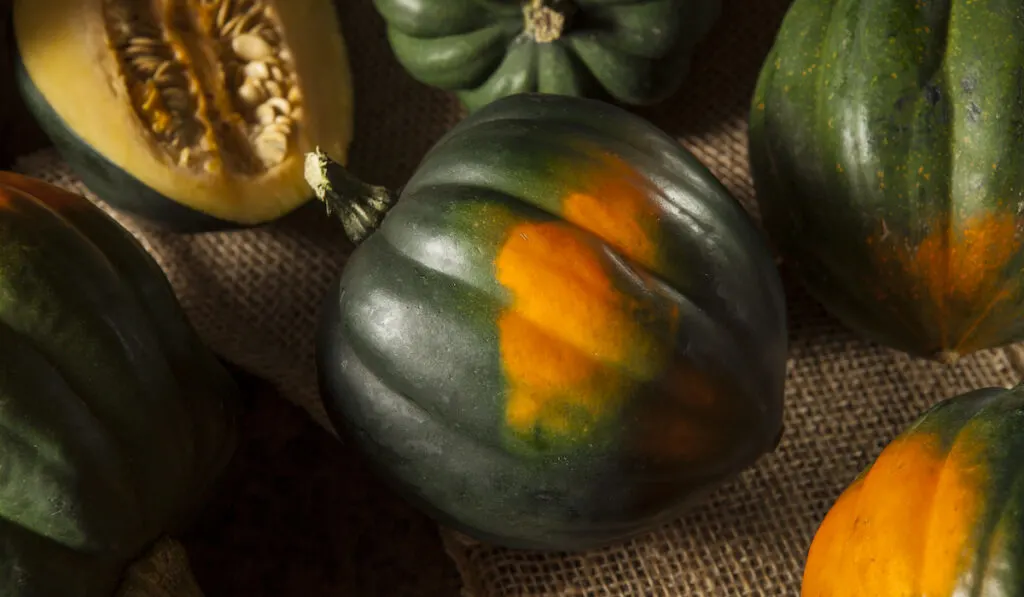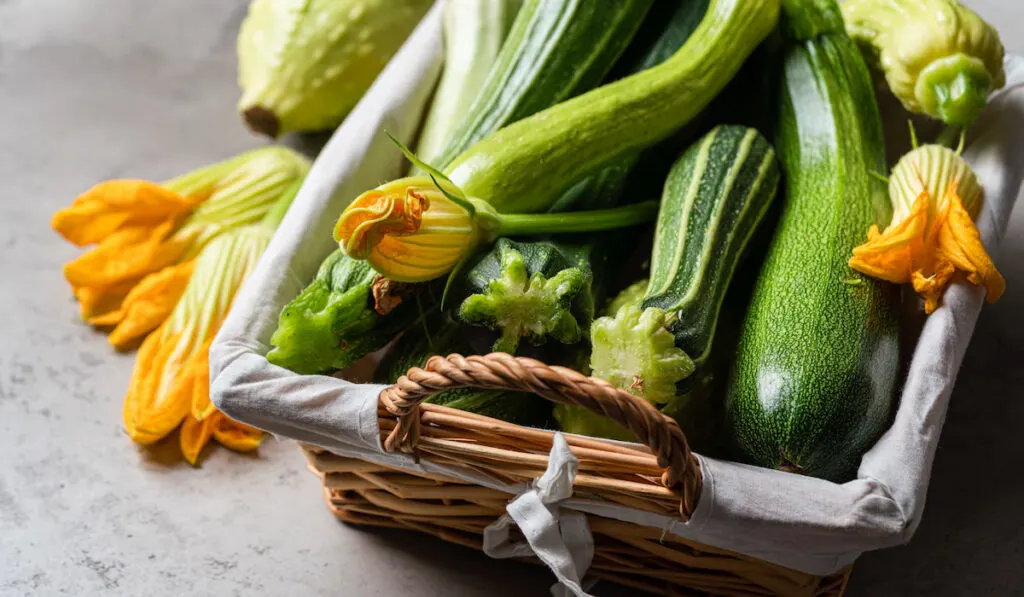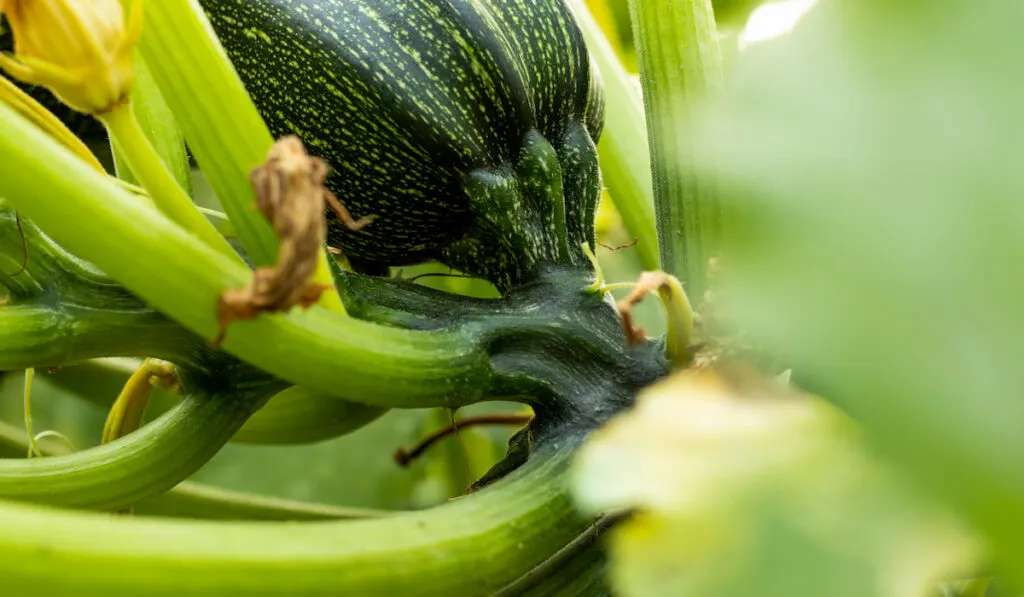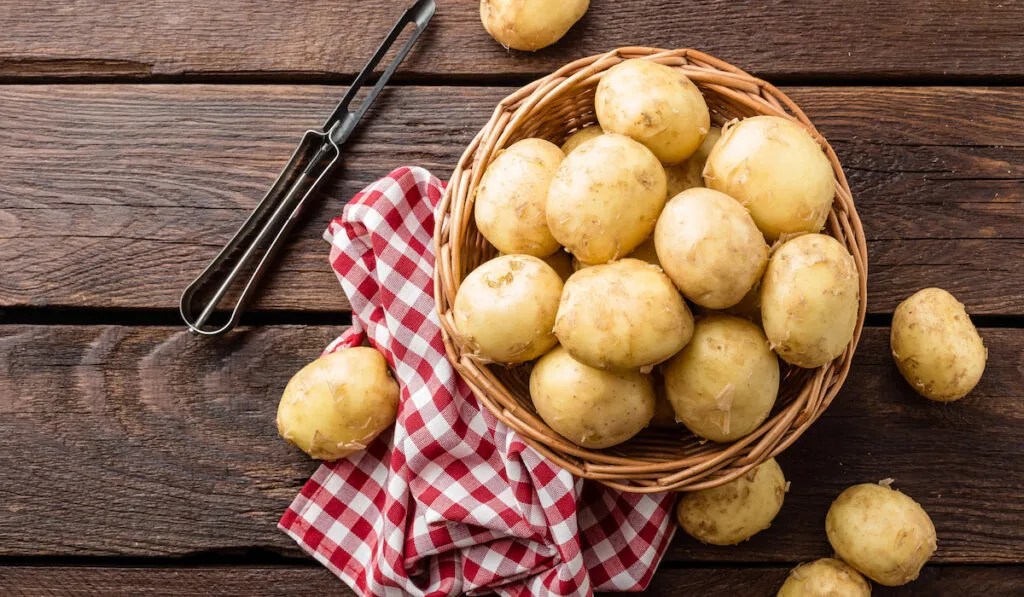There are some vegetables that are able to cross-pollinate with each other, to produce unique and edible hybrids, such as broccoli and cauliflower. Pumpkins are a fall favorite with a variety of uses and abundant flowers that require pollinating to form the characteristic orange fruits we love.
Can other vegetables cross-pollinate with pumpkins?
If you’re looking for some vegetables to plant in your garden that will cross-pollinate with your pumpkins and produce an edible crop, we’ve put together a list of compatible plants to try.
Table of Contents
1. Delicata Squash

Delicata squash first originated in Central America. Part of the Cucurbitaceae family, these squash are similar to acorn squash and are able to cross-pollinate with pumpkins. These squash are part of the Cucurbita pepo group.
Since this squash is similar to pumpkin structurally, this allows them to cross-pollinate and even be edible. The end result of a cross-pollination between these two squash includes a unique and odd shape with various colors and maybe even weird patterns.
2. Acorn Squash

Acorn squash is part of the Cucurbitaceae family. This squash is further part of the Cucurbita pepo group along with a variety of other summer squashes. These are able to cross-pollinate with pumpkins as they have similar structures and the ability and parts to cross-pollinate.
If deciding to cross-pollinate an acorn squash and pumpkin there will be a result of an oddly shaped/colored squash. Although this does not always happen it is almost always unique and shines with various colors and maybe even weird characteristics from the two being combined.
This combination is edible but may have an odd taste due to the difference in texture and taste of both squashes.
3. Zucchini

Zucchini originates from Central America and Mexico. It is part of the gourd group, and overall the Cucurbitaceae family, along with several other types of squash mentioned. These vegetables are able to cross-pollinate with pumpkins due to their similar parts.
Although the zucchini and pumpkin have dissimilar structures and overall different textures, they are able to cross-pollinate. The result is edible but may have an odd appearance, this may involve various colors, patterns, and shapes.
4. Straightneck Squash

Straightneck squash first originated in the United States. These squash are part of the Cucurbita pepo group. These squash are similar to that of the pumpkin so they are able to be cross-pollinated with them.
Among many other squashes, the end result of this cross-pollination includes a new uniquely shaped squash, unique each and every time as the color may shift, new patterns may be shown, along with oddly shaped sides and bumps.
It’s important to note that the resulting squashes are edible, just be sure to wash and clean them thoroughly to ensure safe eating.
5. Cousa Squash

Cousa squash is a lesser-known vegetable part of the Cucurbitaceae family, overall being a squash that comes from a compatible pumpkin family as well. Since these are part of the group Cucurbita pepo, they are able to cross-pollinate with pumpkins.
The results from cross-pollination will have little effect if any, normally taking a further crossing the following year to notice any difference. The Cousa squash cross-pollinating with a pumpkin will lead to a Cousa squash tasting similar to that of its original taste instead of having pumpkin-like qualities.
5 Vegetables and Fruits That Cannot Be Cross-Pollinated with Pumpkin
Alas, not all veggies are meant to be together, some simply just don’t mix well. It is important to know these differences before starting a project or planting your garden.
1. Cucumber

Cucumber is a common garden vegetable that many households grow. They are efficient and easy for many gardens, but have you ever thought about where they should be planted and why? Cucumbers are part of the Cucurbits family as well.
The overall structure of the cucumber is very different from that of a pumpkin. This makes it highly unlikely, short of lab experiments, for it to begin cross-pollination.
2. Watermelon
Watermelon is one of the largest fruits commonly planted in many gardens. Watermelon is part of the Cucurbitaceae family along with squashes, pumpkins, and cucumbers, but not the same genus. Watermelons are not able to cross-pollinate with a pumpkin.
Watermelons have a separation of male and female parts which allows them to crossbreed among each other and those in the Citrullus genus, such as citrons, but not among the squash and pumpkin groups.
3. Citron

Citron is part of the Citrullus genus with watermelon. Citron has bumpy, yellow, lemon-like fruits with extremely thick skins.
Fruits belonging to this genus have a separation of male and female blooms within the same plant. This may lead to the inability for them to become crossed with a pumpkin.
Nevertheless, they are able to cross-pollinate within their group, which includes watermelon.
4. Cantaloupe
Cantaloupe, along with watermelon, honeydew, and squash, is also part of the Cucurbitaceae family. Cantaloupe’s group of melons, the Cucumis melo, also has a separation of both male and female blooms.
This means that only those of the same group are able to cross-pollinate, such as cucumbers, muskmelons, and honeydews. Unfortunately, these fruits are not able to cross-pollinate with pumpkins as they are structured differently.
5. Honeydew

Honeydew is part of the melon group, which is an overall part of the Cucurbitaceae family. Honeydew melons may cross-pollinate among other melons and even cucumbers, but not with a squash, such as a pumpkin.
3 Vegetables That Should Avoid Being Grown Next to a Pumpkin Crop
Did you know that even in some cases there could be mutation and adverse side effects of planting pumpkins near specific vegetables?
When planning out your garden it is best you know which vegetables should not be planted next to each other. Below is a list of the three most commonly planted vegetables that should not be grown next to pumpkins.
When looking to see how far apart these vegetables should be apart from each other, think around 4-6 ft apart so they are growing individually.
1. Beets
Beets are a commonly grown vegetable among gardens around the world. Two such vegetables includes pumpkin and beets.
Pumpkin roots are very sensitive once planted and growing. If they come into contact with your beet’s roots, which are coarse and expanding because beets are a root vegetable, it could lead to oversensitivity and the overall fatality of both veggies and plants.
2. Potatoes

Potatoes are yet another staple in many Americans’ backyards. This starchy vegetable is in a variety of dishes with various uses. Similarly, pumpkin roots are very sensitive, while potato roots are very fiber-based, and are shallow-rooted.
This combination of sensitive roots with fibrous roots contradicts one another and may lead to wilted, dried, and dead veggies at an increased rate by planting these together. Be sure to plant them at least 3-6 feet apart to ensure they are independently growing.
3. Onions
Much like the commonly grown potato and beet, the onion is grown in many gardens across the world. Onions have very sensitive roots like that of the pumpkin. Onions have a fibrous-type root that is highly sensitive and spreads in various directions.
Due to these onion root characteristics, they are incompatible with being grown among pumpkins. The sensitivity of both roots being close together may cause the result of wilted and/or dead vegetables.
Conclusion
The Cucurbitaceae family contains many species of common garden vegetables and to understand it better, it is broken down into several groups. In general, only plants of the same group may cross-breed successfully.
In light of this, pumpkins can successfully cross with other pumpkins or squash in their group. Just be sure to know which group your variety of pumpkin is in to see what it may be pollination-compatible with.
Though cucumbers, watermelons, and other melons are part of the Cucurbitaceae family as well, they are members of other groups and not structured the same. They cannot cross-breed with pumpkins.
Special Note
Before consuming any and all of these vegetables, be sure to wash them. To do this, rinse them under warm water to remove any dirt or bugs. You may even use a mixture of two parts vinegar and one part warm water to get rid of all bacteria and harmful bugs that are on your vegetables.
Sources
- https://www.gardenzeus.com/pumpkins-companion-planting
- https://waterquality.montana.edu/farm-ranch/irrigation/other_crops/potato
- https://www.britannica.com/plant/melon
- https://homeguides.sfgate.com/much-space-between-cucumbers-pumpkins-squash-prevent-cross-pollination
- https://www.walterreeves.com/food-gardening/squashpumpkincucumberwatermelon-pollination-explanation
- https://www.gardeningknowhow.com/edible/vegetables/squash/can-squash-cross-pollinate-with-cucumbers
- https://homeguides.sfgate.com/much-space-between-cucumbers-pumpkins-squash-prevent-cross-pollination
- https://en.wikipedia.org/wiki/Delicata_squash
- https://web.extension.illinois.edu/firstgarden/planning/dictionary/veggies/zucchini
